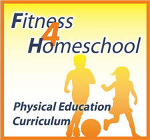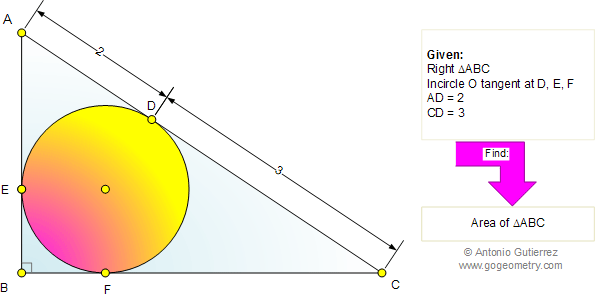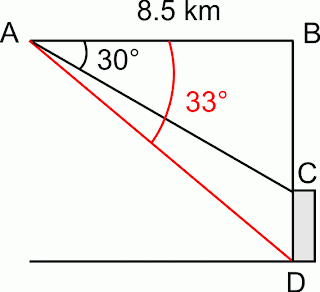
Maria's Math News, Vol. 61, March 2012
I love teaching, and I love math. This newsletter is my way of reaching out and helping you to teach it, too.
 The Fitness 4 Homeschool Curriculum allows homeschool parents to teach physical education without previous knowledge of physical education and athletic development. Our program, designed by experts in fitness training, nutrition and body movement, is designed to suit every age and ability level while affordably fitting into your budget. Our program combines flexibility and fun with a comprehensive curriculum to give your children a foundation for strong bodies and minds.
The Fitness 4 Homeschool Curriculum allows homeschool parents to teach physical education without previous knowledge of physical education and athletic development. Our program, designed by experts in fitness training, nutrition and body movement, is designed to suit every age and ability level while affordably fitting into your budget. Our program combines flexibility and fun with a comprehensive curriculum to give your children a foundation for strong bodies and minds.
The Fitness 4 Homeschool Curriculum includes a startup guide, 260 PDF lesson plans, video demonstrations, assessment tools, reminder emails, access to online webinars and certificates of completion. One curriculum purchase can be used for all your children.
Use COUPON code MATHMAMMOTH20 to get $20 off the purchase of the curriculum!
Hello again! This time we have news about World Math Day, triangle problems, and a review of Hands-On Equations, which is a really good product!
~Maria
1. Math Mammoth news
2. Two triangle problems
3. Review of Hands-On Equations
4. World Math Day (and more)
5. Tidbits
1. Math Mammoth news
 I just learned that About.com readers have voted for their best homeschool math resources, five finalists were chosen, and Math Mammoth is one of the finalists or nominees for the Readers' Choice Award!
I just learned that About.com readers have voted for their best homeschool math resources, five finalists were chosen, and Math Mammoth is one of the finalists or nominees for the Readers' Choice Award!
The final voting has started (among the finalists) and continues through March 21, 2012.
Cast your vote here:
Vote for the Best Homeschooling Math Resource
2. Two triangle problems
I'm reposting here a nice triangle problem with the permission of Antonio Gutierrez from GoGeometry.comThe figure shows a right triangle ABC. The inscribed circle and the hypotenuse are tangent at D. If AD = 2, and CD = 3, find the area of triangle ABC.

The solution is posted here.
The other problem also involves triangles.
From a horizontal distance of 8.5km a pilot observes that the angle of depression of the top and base of a central tower are 30 degrees and 33 degrees respectively.
Calculate
a. the shortest distance between the pilot and the base of the central tower
b. the height of the central tower.
Actually, a good part of this problem is to draw the correct diagram. Once you have the image right, then the math should be fairly obvious.
But I'm going to help you out! Here's the image for this situation:
(not to scale)

The solution is here.
3. Review of Hands-On Equations
Hands-On Equations is a supplementary program that teaches students to solve linear equations using a balance scale and physical "pawns" and number cubes. It is basically a program using a physical manipulative for modeling and solving linear equations—great for kinesthetic and visual learners.Before this review, I had heard about it, and I knew it involved solving equations with a balance, as if "playing." However, once I saw the complete program, I was impressed—because the system of Hands-On Equations includes not only simple equations, but also the usage of distributive property (level I), negative unknowns (level II), negative numbers (level III), AND even word problems similar to typical word problems in pre-algebra or algebra 1.
So it is much more than just a system of modeling the simplest equations. In the end of level III, students are solving equations such as 2(−x + 6) − (−2) = 3x + 1! However, the system is beneficial EVEN if your child/student gets to only do level I, which consists of only 7 lessons, because in the end of Level I, students already solve equations such as 2(x + 1) + 5 = 3x + 6.

Basically, the program starts out with the simplest of linear equations, such as 2x = 6 or x + 5 = 10. Students use a blue pawn for the unknown (for the 'x') and number cubes for the constants. From level II on, they use a white pawn for (-x), also called a "star", and denoted with x. The equations are modeled on the balance so that the left side of the equation goes on the left side of the balance, and similarly for the right side.
Read the complete review
4. World Math Day (and more)
Actually, now it is World Education Games, incorporating World Math Day.
World Education Games has actually THREE different events: World Spelling Day (6 March), World Math Day (7 March), and World Science Day (8 March).
It is free to register and fun. For the World Math Day, you get the opportunity to compete in real time with millions of students from around the world in 60 second math challenges. I don't know how the spelling and science works.
Registration is free and has opened Feb 1, 2012. You can practice fore free at the site after registering.
5. Tidbits
- Pet peeves with Common Core Standards 1
In general, I really, really like the Common Core Standards for math. There is some emphasis and explicit mentions of mental math skills, there is emphasis on conceptual understanding - yet fluency of math facts and of the four operations are included as well. But I've found a few little things there, pet peeves of mine, if you allow...
- Proportions & Barbies
Sixth graders do an activity where they measure Barbies, study proportions, and find how unrealistic body proportions Barbies have!
- Word Game Time
Free online games for English language, such as capitals, synonyms/hononyms, spelling, making words, and more.
- How can you prevent math anxiety and motivate students to study math?
An older article of mine - but still relevant.
Feel free to forward this issue to a friend/colleague! Subscribe here.
Till next time,
Maria Miller